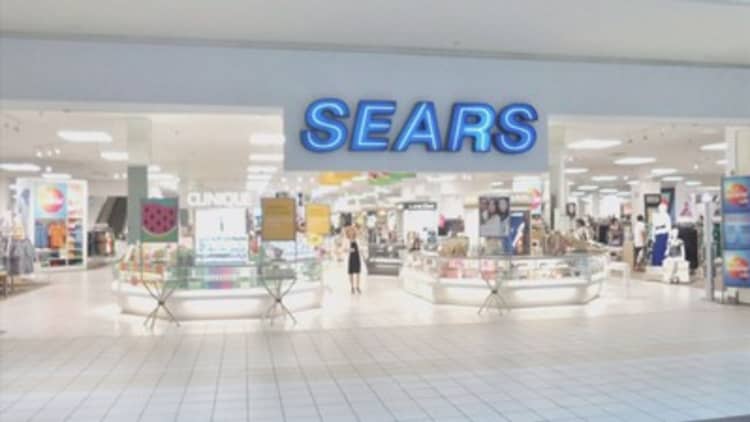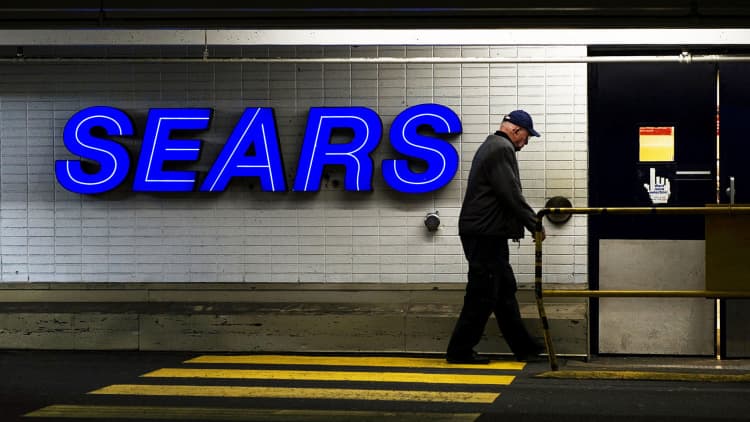Eddie Lampert, the press-shy CEO, chairman and largest shareholder of Sears Holdings, may be all that's standing between the beleaguered department store chain and bankruptcy.
The conventional wisdom is that Lampert will suffer massive losses if Sears perishes, since he has pumped hundreds of millions from his personal fortune into the company. And while there's no question he has a lot at stake, a closer look suggests that the billionaire investor has shielded some of his investment from annihilation in the event of Sears' demise.
Through a series of transactions over the last several years, Lampert has extracted significant value from Sears and may secure additional assets if the company goes belly up, according to public filings and interviews.
More from USA Today:
Sears and Kmart might not have enough money to stock their shelves
Carl's Jr./Hardees CEO Andy Puzder, Trump's pick for Labor, retires
What's killing Sears and Kmart?
Sears, which operates both the Sears and Kmart chains, is teetering, having failed to reinvent itself under Lampert's leadership in the digital age. After a recent $900 million sale of its Craftsman brand, store closures and other cost cuts, Sears warned late Tuesday that there's "substantial doubt" that it will survive.
Lampert owns about 48% of Sears stock, according to the company's annual report, including holdings through his hedge fund, ESL Investments. Besides his stock, Lampert holds about $381 million in unsecured notes issued to Sears. Those holdings could be obliterated in bankruptcy.

USA TODAY estimates that the value of Lampert's Sears stock has declined by roughly $519 million since the end of 2014. That estimate was derived by calculating the value of his Sear's holdings at the end of each year since 2010, using Sears closing stock price for the year and the number of shares Lampert owned at the time, culled from S&P Global Market Intelligence data. Using that methodology, the highest year-end value of Lampert's Sears holdings was $760.3 million.
But Lampert won't lose it all.
"If they go bankrupt, he remains in control of the company because, though he loses his equity stake, he's their principal creditor," former Sears Canada CEO and Columbia Business School Professor Mark Cohen said an interview. But Lampert has cordoned "off an enormous amount of assets through the loans he's made, which have essentially protected him from what is eventually (going to) occur."
He has spun off divisions, provided secured financing in exchange for real estate collateral and transferring valuable properties to an investment trust, all while retaining ownership stakes in those assets.

Here's how Lampert has retained assets even as Sears has shriveled:
•Lands' End: Sears spun off retailer Lands' End in 2014, but Lampert's hedge fund owns 59% of the company. That stake was worth nearly $360 million as of Wednesday morning.
•Real estate: Sears sold 235 store properties and its interest in another 31 properties to a newly formed real estate investment trust (REIT) called Seritage Growth Properties for $2.7 billion in 2015. The deal gave Seritage control of some of Sears' best properties in a sale-leaseback transaction. Lampert's ESL owns 43.5% of the limited partnership units of Seritage and 7.9% of the REIT's voting power.
The move was similar to transactions favored by investors in legacy retailers whose real estate is considered more valuable than their actual business.
The problem is that "then you end up signing leases" and saddling the company with lease liabilities, said Neil Stern, senior partner at retail consulting firm McMillanDoolittle.
Sears agreed to pay Seritage $134 million in annual base rent for the first year, with 2% annually increases beginning in the second year.
•Real estate collateral: Entities affiliated with Lampert's hedge fund extended $500 million in credit to Sears in January, secured by at least 46 Sears properties and possibly more. That means that in the event of bankruptcy, the lender may be awarded the property rights, giving Lampert control of those store sites.

•Additional secured financing: ESL lenders provided Sears up to $500 million through a secured letter of credit facility in December, from which Sears has already drawn $200 million. ESL lenders also hold $336 million in secured debt issued to Sears in April through a separate facility and term loan, as well as $300 million in a second lien term loan issued in September. Secured lenders are paid first in bankruptcy.
•Sears Canada: Sears partially spun off its Canadian division in 2012, but Lampert's ESL owns about 45% of the company. That stake was worth nearly $80 million as of Wednesday morning.
•Sears Hometown and Outlet Stores: Sears spun off the franchise in 2012, but ESL retains 57% ownership of the company. That stake was worth about $45 million as of Wednesday morning.
Also, Sears Hometown and Outlet Stores still acquires "a significant amount of its merchandise" from its former parent company "at cost," according to a filing.
Sears Holdings also provides certain logistics, warehousing, human resources, information technology and transportation costs to Sears Hometown and Outlet Stores, which is invoiced weekly and also pays its former parent royalties on sales of certain brands.
•Paid-off financing: Affiliates of ESL and another Sears investor, Fairholme, made a $400 million short-term loan to Sears in 2014 that has already been paid back in full.
Corporate filings reveal that Lampert, who disclosed in a corporate filng that he owns all of ESL and makes all of its investment decisions, has made moves to protect his position.
"Financially he's moved a lot of levers that have kept this company going longer than some of us thought it could," Stern said. But with "some of those levers you're setting the furniture on fire to keep the house alive."
Sears did not respond to a request for an interview with Lampert, who rarely speaks to the press.
Lampert has insisted that Sears has a path to viability, despite analysts predicting the company's demise. He has steered the company into a new loyalty program called Shop Your Way, approved store closures, authorized a supply chain overhaul and announced cost cuts.
"I firmly believe we will succeed in becoming a new kind of retailer as we provide real value to members with value offerings, personalized services and easy access to the brands, convenience and value they want, whenever and wherever they want," Lampert said March 9 in a letter.
The company, however, hasn't been shy about noting that Lampert's financial prospects may be different than those of the average investor.
"Affiliates of our Chairman and Chief Executive Officer, whose interests may be different than your interests, exert substantial influence over our Company," Sears told investors Tuesday in the public filing.

